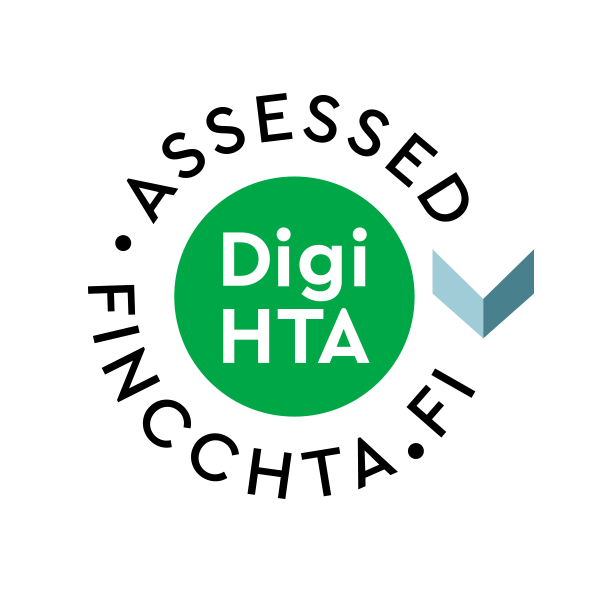The service can be used in two ways:
- Self-measurement: The patients measure the INR value by themselves, based on which the personnel within health care adjust the future doses of medicine. The patient sees the dose instructions through the mobile application.
- Self-care: The patients both measure the INR value and adjust the doses of medicine by themselves. The personnel within health care see the measurement values and the doses of medicine (= remote monitoring).
The service provider has completed a follow-up in five localities, on the basis of the actual use in respect of 58 patients. Based on this, the TTR (time in therapeutic range) was 70.71 % before the remote monitoring and 75.72 % at the end of the remote monitoring period (the difference is not statistically significant). Before the remote monitoring, 13 of the patients had reached the target level/value TTR > 80 %, at the end of the remote monitoring period 29 patients had reached the target level/value (the difference is statistically significant). The results show that for some patients the remote monitoring suits well and the care balance is improving, but, on the other hand, there are patients for which the remote monitoring is not suitable and the care balance is worsening.1
There are ongoing studies carried out by the service provider on the actual use situations.1 According to the satisfaction survey by the service provider, both the patients and the organisations have been satisfied with the service.1
Systematic reviews
Some systematic reviews2,3,4 have been published on the subject, based on which self-measurement and self-care are at least as good as standard treatment.
In the Cochrane review, both self-measurement and self-care were considered together. The relative risk, RR, with regard to thromboembolic events, decreased compared to standard treatment (RR = 0.58; the 95 % confidence interval, CI [0.45, 0.74]), but, when considering the risk of major bleeds (RR = 0.95; the 95 % confidence interval, CI [0.80, 1.12]) or mortality (RR = 0.85; the 95 % confidence interval, CI [0.71, 1.01]), there were no differences. When reviewing only self-care, the risk decreased with regard to thromboembolic events (RR = 0.47; the 95 % confidence interval, CI [0.31, 0.70]) and mortality (RR = 0.55; the 95 % confidence interval, CI [0.36, 0.84]), but there were not any difference with regard to major bleeds. When reviewing only self-measurement, the risk with regard to thromboembolic events (RR = 0.69; the 95% confidence interval, CI [0.49, 0.97]) decreased, but the risk did not decrease with regard to major bleeds or mortality. In 16 studies, the INR values were reported on with target level/value (tests in range). Of these in 15 cases, the results improved in groups of self-measurement or self-care. It should be noted that the quality of the evidence was moderate or low in the studies included.2
When it comes to all studies, it should be noted that the self-measurement and self-care patients have measured the INR values more often than those under standard treatment. In studies, the measurement interval has typically been one (1) week and in the follow-ups of the actual use two (2) weeks. In standard treatment, the INR values are measured once a month. This denser measurement of the INR values may be a component of better care balance.
All studies highlight that self-measurement or self-care is not suitable for all patients. Therefore, special attention must be paid to patient selection and, at the initial stage, success of treatment needs to be monitored closely. Services within remote monitoring used in studies have been different; all are based, however, on implementing communication between the personnel and the patients through digital methods.
Other observations made in the studies
There have been published several follow-up studies of actual use with a larger group of patients and with a longer follow-up period. Related to these studies, the Spanish study concluded that self-measurement and self-care are at least as effective as standard treatment5. In the Danish registry study, self-care was compared to direct anticoagulants (DOAC, direct oral anticoagulant). The study showed that self-care is safe and effective in respect of properly trained patients. The self-care patients have a lower risk of a stroke than those under the DOAC treatment, there were no differences in risks concerning bleeds or mortality.6
Health Technology Assessment (HTA) Reports
In England, the National Institute for Health and Care Excellence (NICE) has assessed self-measurement and self-care in 2014.7 The Canadian Agency for Drugs and Technologies in Health (CADTH) examined the patients’ and the closest relatives’ experiences.8
In Sweden, cost-effectiveness of self-measurement and self-care was examined in 2015.9


